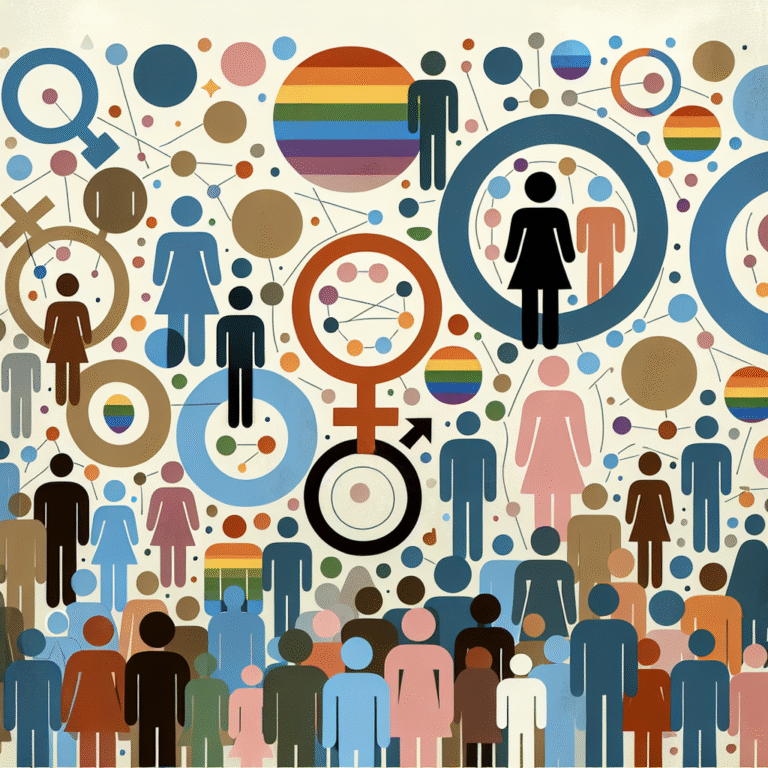
Introduction
Imagine a talented musician stepping on stage, heart pounding, mind racing with the fear that their performance will be judged not just on the notes they play, but on a negative stereotype associated with their background. This phenomenon—known as stereotype threat—has far-reaching implications beyond the world of music. Whether in education, sports, or the workplace, stereotype threat serves as a detrimental force, hampering individuals’ capabilities simply because of how others perceive them. In this article, we will explore stereotype threat: how negative perceptions impact performance across diverse fields, delving into its psychology, real-world implications, and strategies to combat its effects.
Understanding Stereotype Threat
What is Stereotype Threat?
Stereotype threat refers to the anxiety and risk of confirming negative stereotypes about one’s social group. It can affect anyone who belongs to a group that faces negative biases—be it women in STEM, athletes in academia, or minority groups in leadership positions. The fear of confirming these stereotypes can lead to decreased performance, ultimately perpetuating the very stereotypes that caused the anxiety.
The Psychology Behind It
One of the most well-known studies on stereotype threat was conducted by Claude Steele and Joshua Aronson in the 1990s. They found that Black students performed significantly worse on standardized tests when they were reminded of their race. In contrast, when the test was framed as a non-evaluative task, their performance improved markedly. This underscores the psychological burden of stereotype threat and its potent impact on self-esteem and cognitive function.
Fields Affected by Stereotype Threat
1. Education
Case Study: Women in Math and Science
Research has shown that female students often underperform in mathematics and sciences due to stereotype threat. A study led by Spencer, Steele, and Quinn demonstrated that women performed worse on math tests when they were told the test could reveal gender differences, compared to when they were told the test was gender-neutral. This calls for educational institutions to adopt strategies that minimize stereotype threat, such as emphasizing growth mindset and encouraging inclusive environments.
| Setting | Stereotype | Impact on Performance |
|---|---|---|
| Math & Science | Women are worse than men | Underperformance on tests |
| Psychological | Minorities lack intelligence | Reduced self-efficacy |
| Leadership | Women are not natural leaders | Reluctance to pursue roles |
2. Sports
Case Study: African American Athletes in Academia
Athletes, particularly those from minority backgrounds, may experience stereotype threat in academic settings. A study by McKown and Weinstein demonstrated that minority students scored lower on academic tasks when aware of the stereotype that suggests they are less intelligent than their peers. This threat can create a vicious cycle that limits their potential both in sports and academics.
Impact in Team Sports
In team settings, stereotype threat can also influence performance. For instance, when athletes are reminded of a stereotype regarding their racial or ethnic group, they may hold back during crucial moments, leading to poorer outcomes that reinforce those same stereotypes.
3. Workplace Dynamics
Case Study: Racial Minorities in Professional Settings
The workplace is rife with examples of stereotype threat affecting job performance and career advancement. A study published in the Journal of Organizational Behavior found that racial minorities experienced stress and anxiety during job assessments, leading them to underperform compared to their White peers. This kind of performance gap reinforces stereotypes about job abilities and can lead to systemic issues in promotions and new opportunities.
Overcoming Stereotype Threat
1. Creating Positive Environments
Fostering Inclusivity
Workplaces and educational institutions can minimize stereotype threat through inclusive policies and diversity training. Positive role models can be instrumental as their achievements challenge prevailing stereotypes and inspire others.
2. Encouraging Growth Mindset
Mindset Matters
Teaching individuals that abilities can be developed through training and persistence can help mitigate the anxiety associated with stereotype threat. Programs focusing on growth mindset have shown success in improving performance among marginalized groups.
3. Restructuring Assessments
Utilizing Neutral Language
Framing academic tests or workplace assessments in ways that do not emphasize stereotypes can help reduce anxiety. Neutral framing allows individuals to focus on the task rather than the fear of confirming a negative stereotype.
Conclusion
Stereotype threat is a pervasive issue that affects performance across diverse fields including education, sports, and the workplace. By understanding stereotype threat: how negative perceptions impact performance across diverse fields, we empower ourselves to combat its effects through inclusivity, positive role models, and fostering a growth mindset. Every stakeholder—educators, employers, and individuals—plays a crucial role in dismantling the barriers that stereotype threat erects and can work towards a more equitable and supportive environment for all.
FAQs
-
What is stereotype threat?
- Stereotype threat refers to the risk individuals face of confirming negative stereotypes related to their social group, which can adversely affect their performance.
-
Who is affected by stereotype threat?
- Anyone can be affected by stereotype threat, particularly those from groups that experience negative societal stereotypes, such as racial minorities, women in STEM, and athletes.
-
How can educators reduce stereotype threat in the classroom?
- Educators can reduce stereotype threat by creating inclusive classroom environments, emphasizing a growth mindset, and using neutral language in assessments.
-
What are the long-term implications of stereotype threat?
- Long-term, stereotype threat can lead to reduced career opportunities, lower self-esteem, and perpetuation of negative stereotypes.
- Can stereotype threat be beneficial?
- While stereotype threat predominantly has negative impacts, awareness of it can motivate individuals to outperform expectations and challenge stereotypes.
In exploring stereotype threat: how negative perceptions impact performance across diverse fields, we delve into critical social dynamics that affect individuals and communities. The challenge is great, but the potential for positive change is even greater. Let us strive to create a world where performance is based on merit, not misplaced perceptions.














